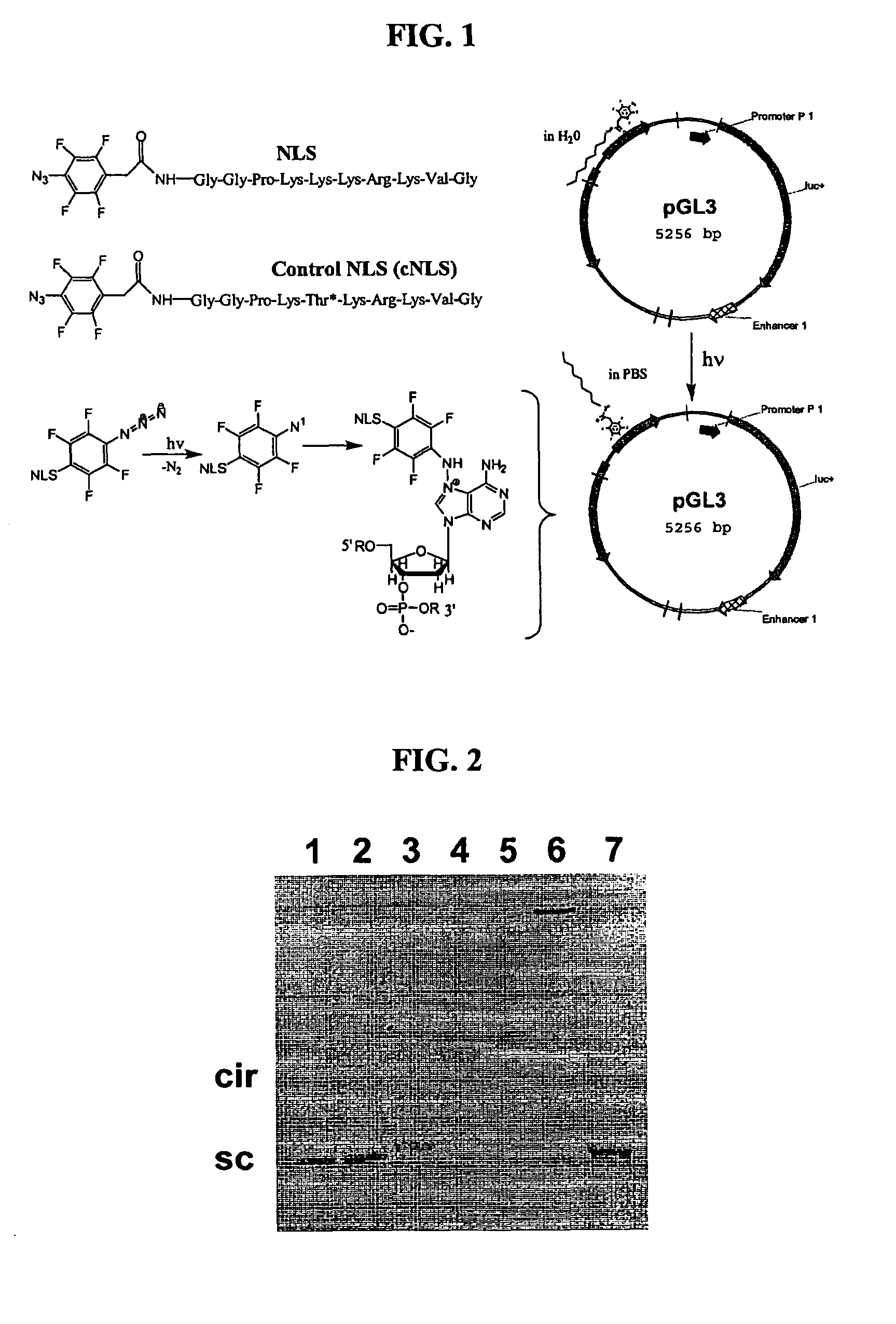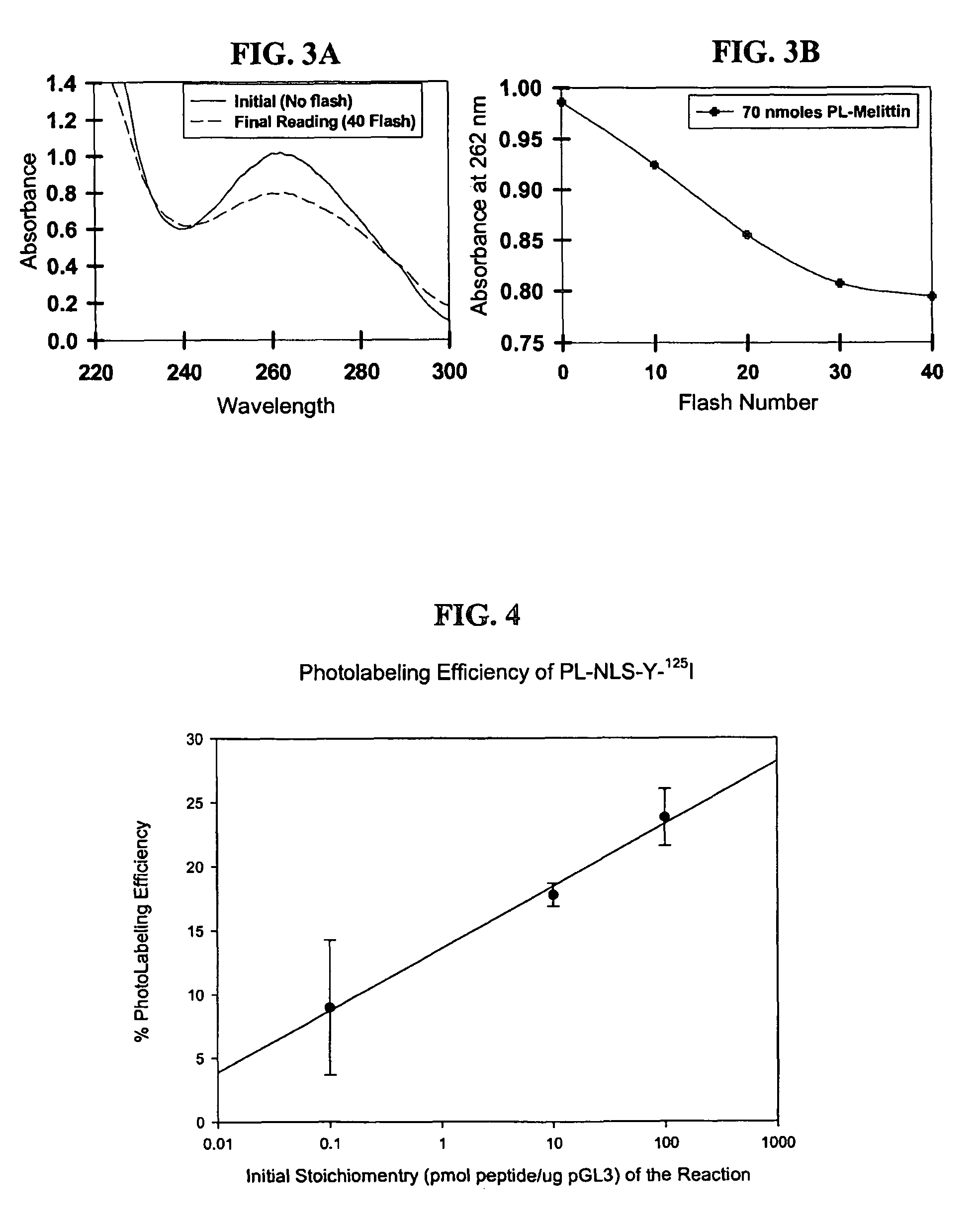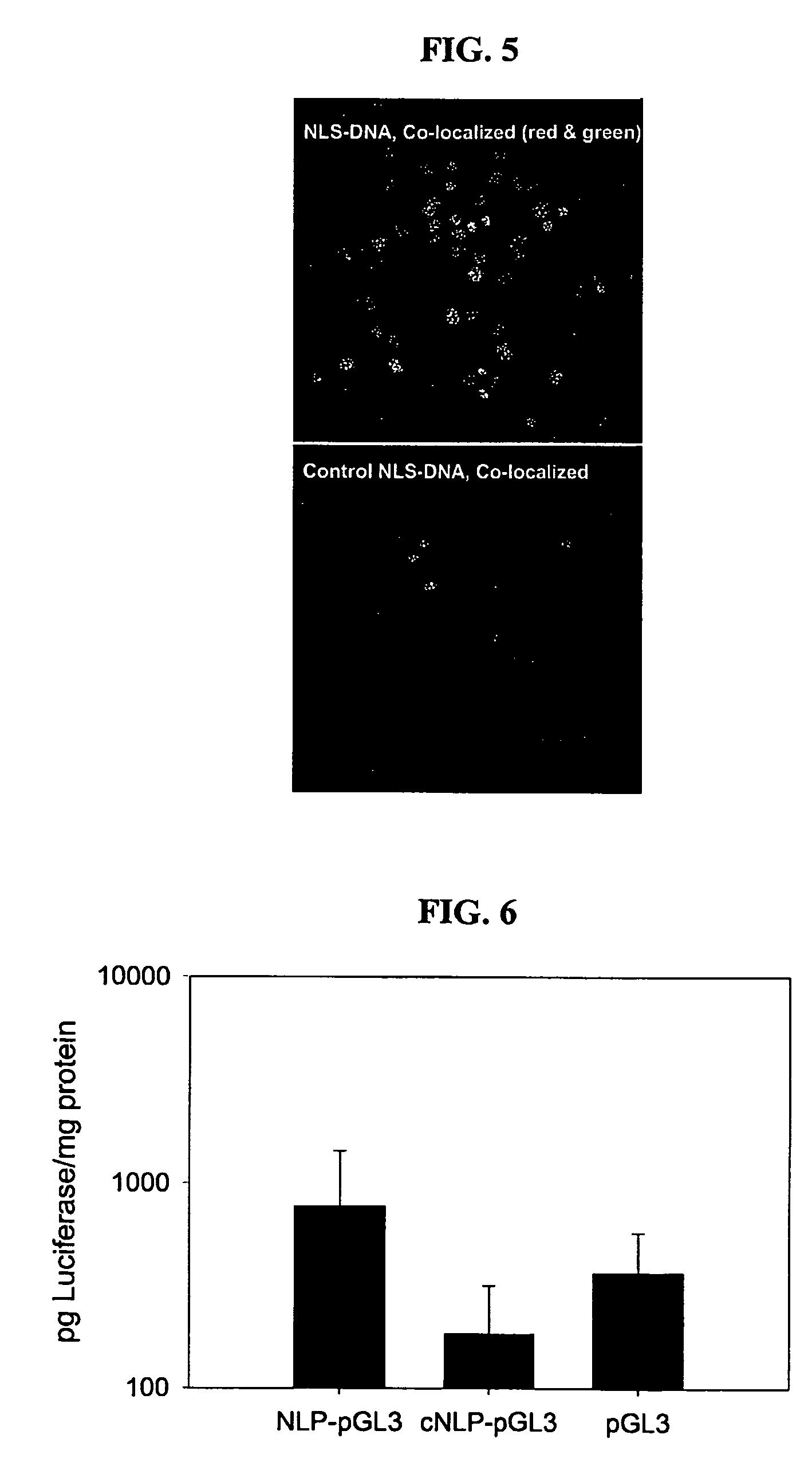Compositions and methods for nucleic acid delivery
a nucleic acid and nucleic acid technology, applied in the direction of peptides, peptide/protein ingredients, peptide sources, etc., can solve the problems of unsatisfactory use of viruses as carriers, impracticality of delivering genes to cells within intact animals, etc., and achieve the effect of increasing gene expression
- Summary
- Abstract
- Description
- Claims
- Application Information
AI Technical Summary
Benefits of technology
Problems solved by technology
Method used
Image
Examples
example 1
Preparation of the NLS Peptide
[0105]Plasmid DNA was derivatized with a photo-labeling NLS peptide. We prepared a NLS peptide derivatized at the N-terminus with azido tetrafluorobenzylamide (Az-TFBA) to form NLS 1 [SEQ ID NO:16] (FIG. 1) and control NLS 1 [SEQ ID NO:17]. Az-TFBA is available commercially from Invitrogen. The chemical synthesis of photolabeling NLS proved to be very efficient since the photolabel was attached during the last cycle of solid phase peptide synthesis. In each case the conjugate was purified to homogeneity on RP-HPLC and characterized by LC-MS (data not shown).
example 2
Preparation of the NLS-Polynucleotide Conjugate
[0106]The Az-TFBA is designed to photolyse and cross-link with DNA at higher wavelengths (365 nm) than traditional photoaffinity labels, thereby avoiding UV crosslinking of DNA. A schematic representation is shown in FIG. 1. Agarose gel electrophoresis was used to establish the formation of photo adducts between NLS 1 and DNA. Combining the peptide with plasmid DNA followed by photoflash (40 times with three photo triggered flash photography lamps) resulted in a band shift of the DNA, the degree of which was dependent upon the stoichiometry of NLS to DNA (FIG. 2). The dramatic band shift at high NLS loading (lanes 3-6) is for illustrative purposes. The lanes represent: (1) DNA standard, (2) 0.001 nmol of NLS, (3) 0.05 nmol of NLS, (4) 0.1 nmol of NLS, (5) 0.3 nmol of NLS, (6) 0.6 nmol of NLS, (7) 0.6 mmol of NLS, no flash. Omitting the flashing step, even at high peptide to DNA stoichiometry, resulted in no band shift. Likewise, photo f...
example 3
Nuclear Localization of NLS-DNA In Vitro
[0112]Confocal fluorescence microscopy was used to evaluate the ability of NLS-DNA to target the nucleus relative to a control. pGL3 (a plasmid encoding Luciferase) was covalently labeled with the fluorophore Cy3. The plasmid was purified by ethanol precipitation and analyzed by gel electrophoresis and scanning fluorescence to confirm covalent attachment of the fluorophore. Cy3 labeled pGL3 was then further modified by photolabeling with either NLS 1 or control NLS 1.
[0113]The doubly labeled plasmid (2 μg) was condensed with PEI (polyethylene imine) (9:1, N:P) and used to transfect 3T3 cells in DMEM (2% FBS) for 6 hrs, followed by three washes with PBS and fixing with 4% paraformaldehyde. Cells were maintained at 4° C. in the dark in PBS until imaged. Just prior to imaging, the cells were permeablized with 0.5% Triton X-100 and treated with TO-PRO-3 to stain the nuclei. The confocal fluorescence imaging was performed on a Bio-Rad Radience 2100...
PUM
| Property | Measurement | Unit |
|---|---|---|
| pH | aaaaa | aaaaa |
| pH | aaaaa | aaaaa |
| pH | aaaaa | aaaaa |
Abstract
Description
Claims
Application Information
 Login to View More
Login to View More - R&D
- Intellectual Property
- Life Sciences
- Materials
- Tech Scout
- Unparalleled Data Quality
- Higher Quality Content
- 60% Fewer Hallucinations
Browse by: Latest US Patents, China's latest patents, Technical Efficacy Thesaurus, Application Domain, Technology Topic, Popular Technical Reports.
© 2025 PatSnap. All rights reserved.Legal|Privacy policy|Modern Slavery Act Transparency Statement|Sitemap|About US| Contact US: help@patsnap.com



